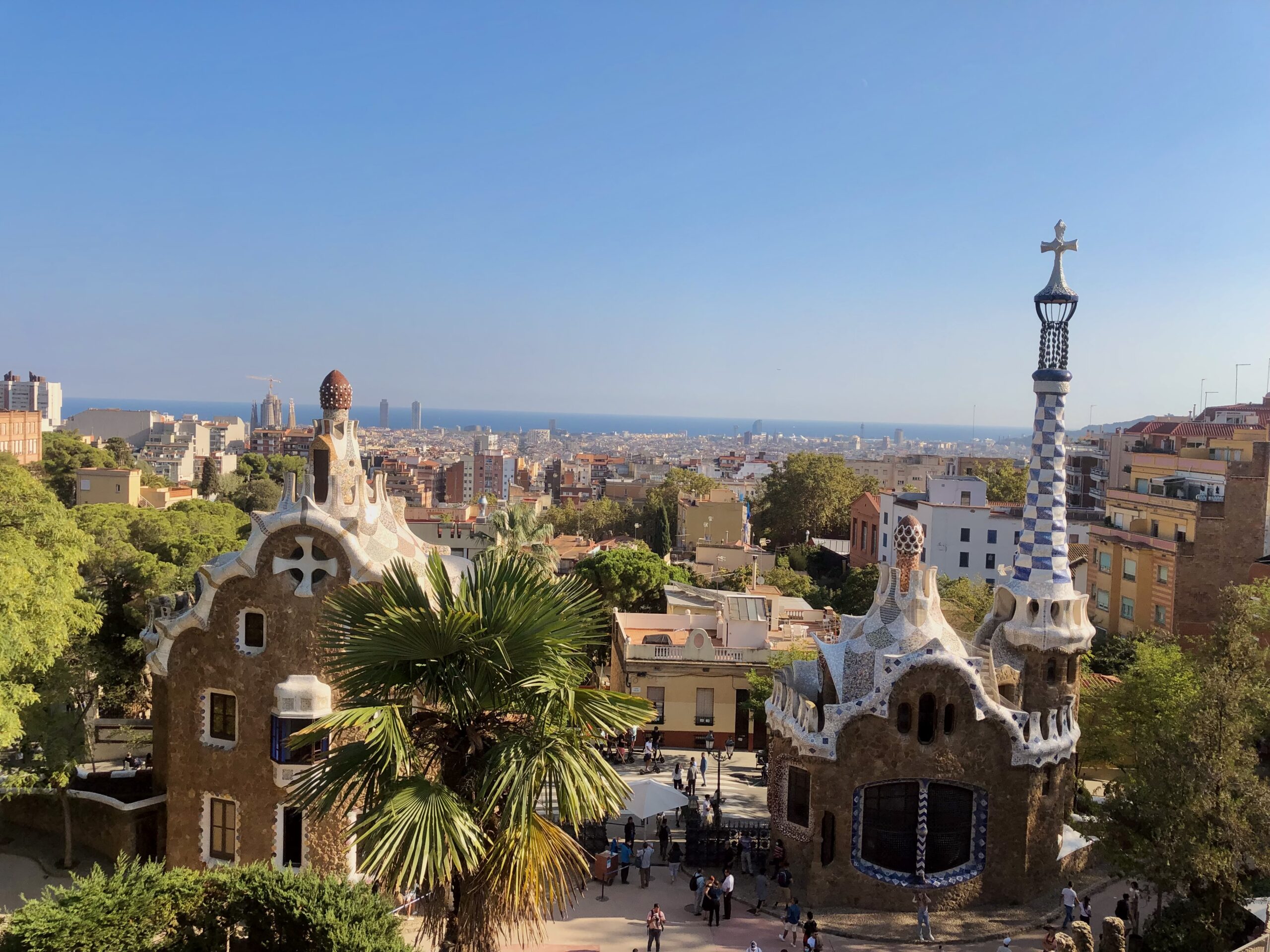
Things to Know Before Visiting Barcelona
Some helpful info, tips and things to know before visiting Barcelona to help you thrive on your trip (especially if you're American!)
Now I might be biased, but Barcelona is definitely a bucket list location that you have to visit if you're in Europe. It's a young and vibrant city perfect for exploring, lounging and of course, partying. While it mainly attracts younger crowds, there's something for everyone here.
Barcelona is one of those places where you'll always leave with fond memories and stories because there are so many things to do and good vibes all around. Watching Cheetah Girls 2 at the beginning of my study abroad inspired me to explore as much of the city as possible, but even today, there's still more I need to see (stay tuned for a later post on things to do in Barcelona).
The perfect time to visit is during the off seasons, usually from April to May and September to October. Summertime is the busiest time of year, with July and August being the peak months. You'll find the streets packed and your photos photobombed by tourists in the background. It's so busy on La Rambla that you can hardly see the street with all the people walking around!
Although the summer months are the busiest, there's never really a bad time to visit! Here are some things you need to know before visiting Barcelona (especially if you're American) so you can thrive on your trip.
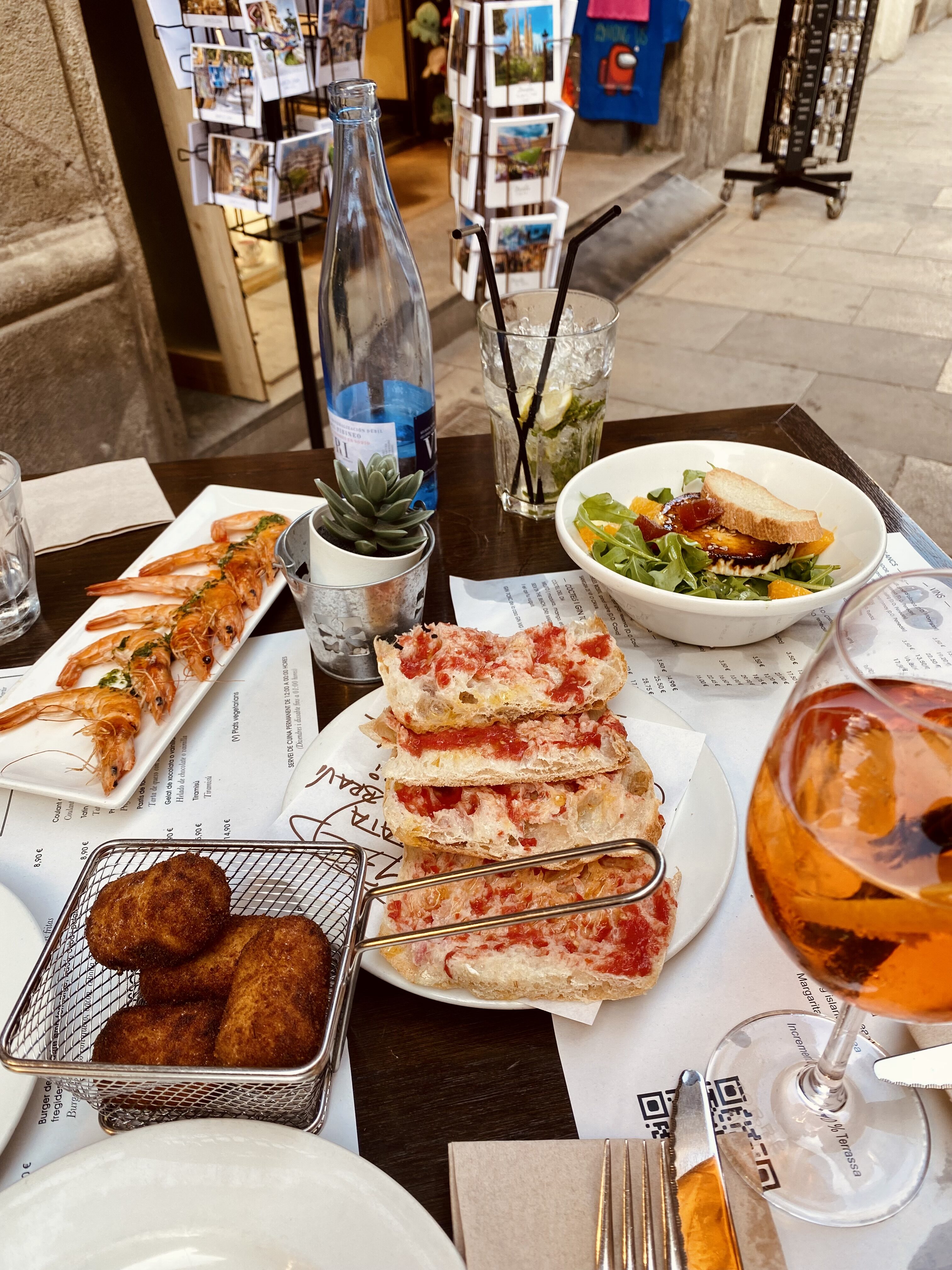
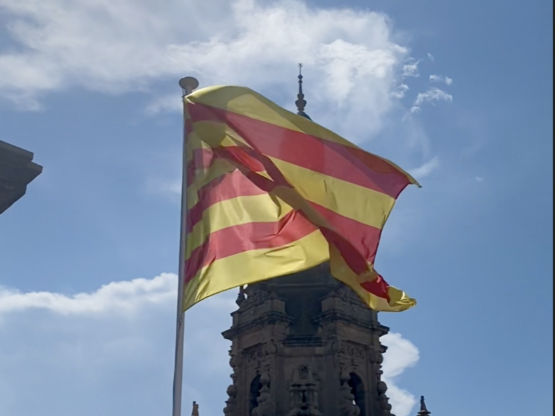
Basic Info on Languages and Culture
One of the most important things to know before going anywhere new is getting some basic info and a general overview of the culture. Context is key and it can help you better prepare for your trip.
Barcelona is the capital of Catalunya, one of the many autonomous regions you can find in Spain. Like other regions, Catalunya has its own languages and deeply rooted traditions that you can only find within this area. It's important to note that this autonomous region in particular has a long and complicated history with Spain, with many wanting independence from Spain and viewing themselves as Catalan and not Spanish.
Given this unique history and rich culture, Barcelona is a multilingual city with most people speaking Catalan and Castellano, and many knowing a good level of English due to all the tourism. In other words, being bilingual or trilingual is almost a given for locals and expats alike living in Barcelona. I've even met people who know 4 or 5 languages, switching effortlessly between them all. They make it seem so easy!
If you don't speak any Spanish, you won't have many problems communicating since most people will know English. Though of course, it doesn't hurt to learn a few words and try speaking in Spanish. People here are quite welcoming and won't judge you for it.
Another thing to know about Barcelona is the food culture, specifically the eating times. Like most of Spain, meals are taken much later and in much smaller portions than in the US. Whereas in California we'd have lunch at 11 or 12, lunchtime here is around 1 or 2, and lasts for an hour or so. This is why you'll see stores closing halfway through the day and opening again later at 4 or 5 until 9, which is dinnertime. Some people might eat dinner at 10 or even 11 at night!
You'll see families out late with young kids, even on weekdays, because it's dinnertime and that's just how the culture is. It's interesting how food can make up such a huge part of the culture and impact daily life at this level. These food times actually apply to all of Spain, not just Barcelona. It really shows how much people here appreciate taking the time to eat and fully enjoy their meal, rather than quickly stuffing their faces so they can get back to work or run errands like in the US. The lifestyle here is chill and relaxed, so don't rush through your meals!
Public Transportation System & Passes
Barcelona is a very walkable city but it also has an effective public transportation system that is perfect for seeing all the sights here in a short amount of time. It's so effective that you really don't need to have a car if you live here, not in the way that you do in America. Of course, due to heavy lobbying by the automobile industry, the US was specifically built so that you have to have a car to move around. Hence why most people must rent cars and order Ubers when they're visiting the states.
Barcelona's transportation system, the TMB, consists of the metro, buses, regional trains (Renfe Rodalies), urban railway (FGC), trams and funicular. The most common modes would be the metro, train and buses since they connect to all parts of the city. The FGC, trams and funicular are only found in certain areas and take you to limited places.
The FGC is usually for the outskirts of the city and for getting to places more inland, like Montserrat and Igualada. The trams only run in the Sant Marti area of the city, and the funicular is for Montjuic and Tibidabo. If you're only in Barcelona for a short trip, you'll likely only use the metro and bus, and maybe even the train if you're taking a day trip or want to take shortcuts.
The metro is by far the best and most efficient way to get around the city. With over 8 lines and many connections, you can get to anywhere you need. It opens at 5am until midnight almost every day and they come every 2-5 minutes, so it's not a big deal if you miss one!

Taking the metro for a night out.
The trains also stop around midnight, though the metro stays open until 2am on Fridays and is open all night on Saturdays (handy for those late nights out). The buses, on the other hand, run 24/7, which is the best thing ever! In fact, the only times I ever really used the buses was when the metro was closed.
It's great if you have early morning or late night flights and need to get to the airport on time or make your way back home when the metro and trains are closed. The Barcelona buses have never failed me and it's always good to know that I have the buses to rely on if my flight gets delayed or I need to get around in the middle of the night, especially if there are any emergencies!
The Renfe train system is perfect for taking day trips outside the city to nearby towns like Castelldefels, Sitges, or even Girona. Although lately there's been many delays due to infrastructure damage, the trains run pretty often and there are many lines that allow you to explore outside Barcelona.
Not only is there a variety in the transportation modes here but there's also a variety of passes you can get. There are so many options that can suit everyone's needs whether you're here for a day or staying long term. If you're in Barcelona for a weekend trip, I would recommend the Hello Barcelona travel cards because it gives you unlimited travel for your entire trip. Currently, a 48hr Hello Barcelona card is 15€. Only 15€ for UNLIMITED travel within the city on all modes of transportation. I mean what a bargain! America could never have such an affordable and effective public transportation system.
Since I use the metro every day to get to work and get the train to Sitges often, I got the T-Jove card which costs 40€ and gives you unlimited travel within all six zones around Barcelona for three months. I mean it really doesn't get better than that. Thanks to the many measures implemented by the Spanish government to boost public transportation use, it's very easy and affordable to explore the city and surrounding areas.
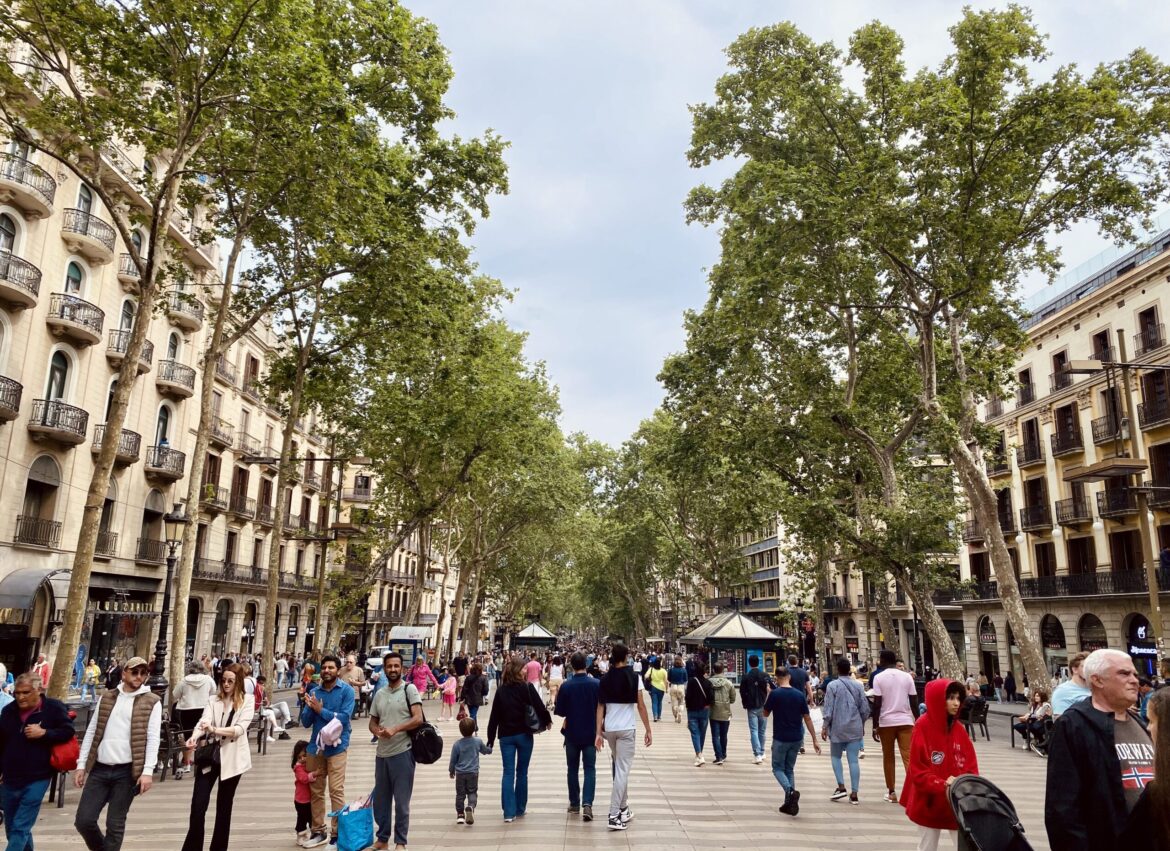
The top of La Rambla, a pickpocketing hotspot.
Pickpocketing
Pickpockets here are professionals! It's almost impressive how sly and quick they can be with pickpocketing. It can be scary because you never know when you can be pickpocketed or by whom. There's no set description of what a pickpocket looks like, and most of the time they'll try to blend in with other tourists, so you don't really know who to look out for. They mainly work in pairs, with one person approaching you asking for directions while the other pickpockets you as you're distracted.
My rule of thumb is to keep belongings out of sight secured in pockets and hold your bag close to you. If you're wearing a backpack, wear it in front of you (looks funny, I know, but better to be safe than sorry). NEVER have valuables in the front pockets of your bag as those are the pockets most likely to be picked. Make sure you wear your bag crossbody with your hand on the zipper, and never leave your bag hanging off your seat or leave it out next to you at a cafe or restaurant. If you have no bag, make sure you don't put anything in your back pockets (certainly not a phone as that is guaranteed to be pickpocketed) and ensure your pockets are secured with zippers or buttons so it makes it harder for pickpockets to get your belongings.
If anyone approached you asking for help, keep an extra tight hold on your bag or protect your pockets and look around to see if there is anyone else near you who is attempting to pickpocket you. Of course, some people might genuinely need help and are not trying to pickpocket you so don't be too tense but do ensure your belongings are safe at all times. Be extra careful on public transportation, especially on the metro since it can get super busy during rush hours where you're crammed into the cars, making it the perfect place for pickpockets. I'll link some more tips here.
Overall, just keep your belongings close to you and be aware of your surroundings ALWAYS. Basic awareness and common sense can go a long way!
Water
WATER IS NOT FREE! I know that must be weird for me to say as one of the most important things to know before visiting Barcelona, but it's something many people don't realize when they visit. I suppose being an American, you get so used to being served free water as soon as you sit down at a restaurant and not having to worry about paying for how much water you drink.
Also, places here don't overload your glasses with excessive amounts of ice as they do in the states. They usually just have one big ice cube or no ice at all, even in the summer. So to my Americans out there who love drinking free water filled with all the ice you can get, be prepared, as this applies to many other European cities, not just Barcelona.
Public Bathrooms
For all my people out there with small bladders like me, finding and knowing the nearest public restroom is a must! Unfortunately, there are not many public restrooms in Barcelona, but I've found a few places throughout the city that are useful and handy to know - just in case.
- Glòries Westfield Mall: It's a little far from the city center, but there are plenty of bathrooms and it's a great spot for some shopping.
- El Corte Inglés by Plaça Catalunya: There's one on the men's floor and children's floor. Though there are usually long lines, they're free!
- Sants Estació: You must pay to use the bathrooms at this train station (the biggest one in Barcelona), but if you're taking the regional Rodalies trains, there are some bathrooms you can use for free past the ticket entrance.
- Estació de França: This is another train station that has a bathroom, and you don't need to go through any ticket entrances to get to it. You can find it close to the Barceloneta metro stop.
- Triangle Mall: I wouldn't say it's a proper mall like Glòries since there are limited shops and you must pay to use the bathroom.
- McDonald's: Some McDonald's will let you enter the bathrooms without needing to be a customer but for the ones in the most touristy areas (aka La Rambla) you need to use the number on your receipt to enter.
Of course, you can't go wrong with stopping at a cafe and buying some coffee or water just so you can use the bathroom! Places here generally don't let you use the bathrooms for free, you must be a customer. I believe there are also some portable toilets on Barceloneta beach, but I would steer clear of those.
Things/Places to Avoid
Barceloneta is actually one of the safest cities you can visit. It's true there are many pickpockets but that's mostly just petty theft, there is little violent crime. There are no shootings or stabbings that you hear of here like you do in London or Paris. There have been many times where I had to get back home on my own at night and never had any problems, I always felt perfectly safe. That in mind, there are a few places and things I avoided to ensure I always stayed safe:
- Restaurants on La Rambla. The worst thing you can do is eat at one of the restaurants on La Rambla. Firstly, there are just way too many people, making it a prime spot for pickpockets. If you leave your bag or phone out, it will likely get stolen. Secondly, the prices are outrageous! Avoid and head to La Boqueria for some quick bites or walk through el Barrio Gotico to find a cool place to eat instead.
- El Raval at Night!!! It's a fine place to visit during the day because there are lots of nice thrift stores and cafes, but you should avoid it at night as it is a hotspot for pickpocketing and assaults. It becomes a generally unsafe place, even for men. However, there are some really cool bars in El Raval such as 33|45, Nevermind and Ovella Negra. In fact, Two Schmucks, one of the top bars in the world (ranked 7th) is located in El Raval. Since it's on a busy street it's okay to visit at night, just be sure to always have company, be careful, and avoid exploring other areas in El Raval at night.
- The metro after midnight. Although the metro is open until 2am on Fridays and all night Saturdays, I generally avoid taking the metro home past 1/2am because it can get a bit dodgy during the night. It's fine if you have company, but try not to take it alone past these hours. The buses are a much better option and they are always safe.
- Buying beer on the street. If you're going for a night out and you're walking the streets as you're bar hopping or after the bars close, you'll probably get approached by people selling beer on the street for cheap. AVOID. I was told by my study abroad advisors to avoid buying this 'sewer beer' as they called it (they're usually stored in sewers or garbage containers) since you can never really trust it. Buying sketchy beer or drinks from strangers on the street is never a good idea.
- Barceloneta. I wouldn't say to avoid it completely as it has the iconic view of The W Hotel and it can be nice to walk along the promenade, but if you're looking to spend time at the beach then skip Barceloneta and head to Olympic Village or Bogatell. There are fewer crowds, cleaner water and much fewer pickpockets. I've heard many stories of people getting their stuff stolen on the beach, even their shoes! So if you do go, be extra careful of your belongings.
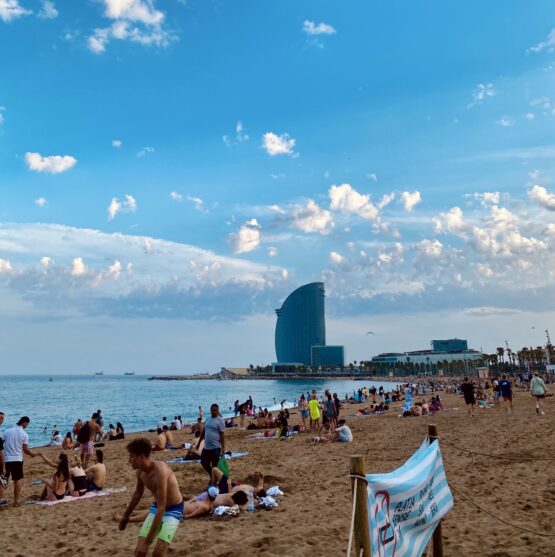
The view of The W Hotel from Barceloneta beach.
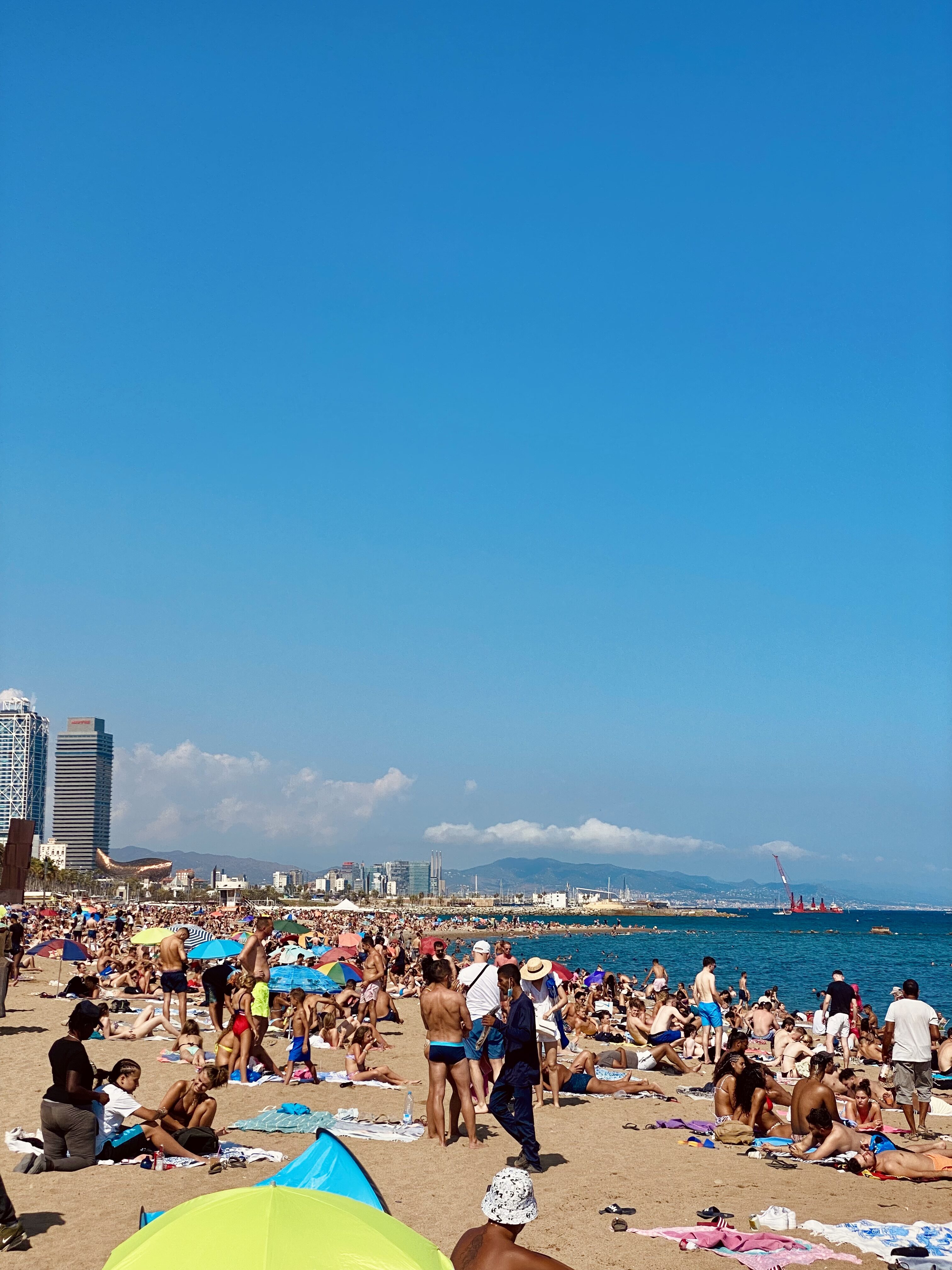
The crowds at Barceloneta beach on a summer day.
Things/Places You Shouldn't Avoid
Alternatively, here are some things you definitely shouldn't avoid so you can get the most out of your visit:
- Free walking tours: This is something I've actually never done before because by the time I found out about them, I had already seen the city through the tours with my study abroad group! You can find these tours in almost every major city and it's really nice because you get a better understanding of the place and learn super cool fun facts. In Barcelona, you'll find a variety of free tour options, with some more focused on art and others on food. Although it's technically free, you should always compensate your tour guide (discretion is up to you and your budget).
- Waking up early: If you get up early and get a head start on sightseeing - say around 8 or 9am - you'll avoid big crowds and get the perfect pictures without any photobombs! You also won't have to worry as much about pickpockets since there will be fewer crowds. Keeping in mind the extreme heat, if you're visiting in the summer, mornings are the coolest time so it's perfect for more active sightseeing in places like Park Güell or Montjuïc.
- Free Museums on Sundays: Many museums are free the first Sundays of the month and also have free or discounted prices after certain times of day. For example, the Picasso Museum is free the first Sunday of each month and on Thursdays from 5 to 8pm. Make sure to book and reserve these free museum days ahead of time as they have limited free tickets to give out.
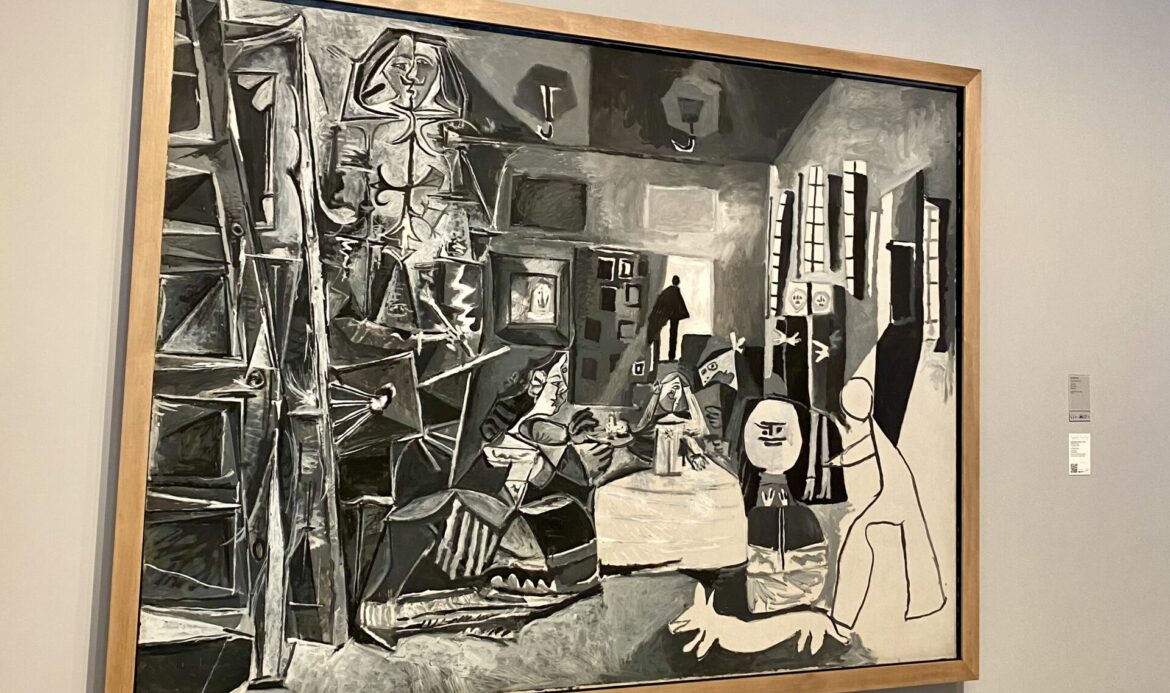
Las Meninas at the Picasso Museum
Barcelona is not as romanticized as Paris, as historic as Rome or as popular as Madrid, but it's truly an amazing city to visit. With these tips and tricks in mind, you'll thrive on your visit! And if you haven't put Barcelona on your bucket list already, you should!
Feel free to leave any feedback or recommendations below, and stay tuned for more posts on Barcelona. Thanks for reading!
Love, Lany.
